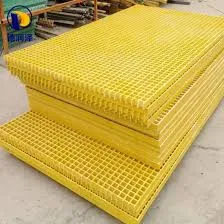
-
 Afrikaans
Afrikaans -
 Albanian
Albanian -
 Amharic
Amharic -
 Arabic
Arabic -
 Armenian
Armenian -
 Azerbaijani
Azerbaijani -
 Basque
Basque -
 Belarusian
Belarusian -
 Bengali
Bengali -
 Bosnian
Bosnian -
 Bulgarian
Bulgarian -
 Catalan
Catalan -
 Cebuano
Cebuano -
 China
China -
 China (Taiwan)
China (Taiwan) -
 Corsican
Corsican -
 Croatian
Croatian -
 Czech
Czech -
 Danish
Danish -
 Dutch
Dutch -
 English
English -
 Esperanto
Esperanto -
 Estonian
Estonian -
 Finnish
Finnish -
 French
French -
 Frisian
Frisian -
 Galician
Galician -
 Georgian
Georgian -
 German
German -
 Greek
Greek -
 Gujarati
Gujarati -
 Haitian Creole
Haitian Creole -
 hausa
hausa -
 hawaiian
hawaiian -
 Hebrew
Hebrew -
 Hindi
Hindi -
 Miao
Miao -
 Hungarian
Hungarian -
 Icelandic
Icelandic -
 igbo
igbo -
 Indonesian
Indonesian -
 irish
irish -
 Italian
Italian -
 Japanese
Japanese -
 Javanese
Javanese -
 Kannada
Kannada -
 kazakh
kazakh -
 Khmer
Khmer -
 Rwandese
Rwandese -
 Korean
Korean -
 Kurdish
Kurdish -
 Kyrgyz
Kyrgyz -
 Lao
Lao -
 Latin
Latin -
 Latvian
Latvian -
 Lithuanian
Lithuanian -
 Luxembourgish
Luxembourgish -
 Macedonian
Macedonian -
 Malgashi
Malgashi -
 Malay
Malay -
 Malayalam
Malayalam -
 Maltese
Maltese -
 Maori
Maori -
 Marathi
Marathi -
 Mongolian
Mongolian -
 Myanmar
Myanmar -
 Nepali
Nepali -
 Norwegian
Norwegian -
 Norwegian
Norwegian -
 Occitan
Occitan -
 Pashto
Pashto -
 Persian
Persian -
 Polish
Polish -
 Portuguese
Portuguese -
 Punjabi
Punjabi -
 Romanian
Romanian -
 Russian
Russian -
 Samoan
Samoan -
 Scottish Gaelic
Scottish Gaelic -
 Serbian
Serbian -
 Sesotho
Sesotho -
 Shona
Shona -
 Sindhi
Sindhi -
 Sinhala
Sinhala -
 Slovak
Slovak -
 Slovenian
Slovenian -
 Somali
Somali -
 Spanish
Spanish -
 Sundanese
Sundanese -
 Swahili
Swahili -
 Swedish
Swedish -
 Tagalog
Tagalog -
 Tajik
Tajik -
 Tamil
Tamil -
 Tatar
Tatar -
 Telugu
Telugu -
 Thai
Thai -
 Turkish
Turkish -
 Turkmen
Turkmen -
 Ukrainian
Ukrainian -
 Urdu
Urdu -
 Uighur
Uighur -
 Uzbek
Uzbek -
 Vietnamese
Vietnamese -
 Welsh
Welsh -
 Bantu
Bantu -
 Yiddish
Yiddish -
 Yoruba
Yoruba -
 Zulu
Zulu
Exploring the Properties and Applications of FRP Rectangular Tubes in Construction
Exploring FRP Rectangular Tubes Applications, Benefits, and Manufacturing
Fiber Reinforced Polymer (FRP) rectangular tubes are innovative materials that have gained popularity across various industries due to their superior strength-to-weight ratio, corrosion resistance, and versatility. These composite materials are made by embedding fibers—commonly glass, carbon, or aramid—into a polymer matrix, resulting in a structure that combines the lightweight properties of plastics with the enduring strength of metals.
Applications of FRP Rectangular Tubes
FRP rectangular tubes are widely used in several applications, including construction, automotive, aerospace, and marine industries. In the construction industry, they provide structural reinforcement for buildings and bridges, making them ideal for applications requiring high strength without adding excessive weight. Their excellent resistance to corrosion enables FRP tubes to be used in environments prone to moisture or chemicals, ensuring longevity and reducing maintenance costs.
In the automotive sector, FRP rectangular tubes are used in the design of vehicle frames and body components. Their lightweight nature helps improve fuel efficiency while maintaining structural integrity. In aerospace, these tubes are employed in aircraft structures and components, contributing to weight reduction and enhancing performance. Additionally, the marine industry leverages FRP rectangular tubes in the construction of ships, boat hulls, and offshore structures, capitalizing on their resilience against harsh environmental conditions.
Benefits of Using FRP Rectangular Tubes
One of the primary advantages of FRP rectangular tubes is their exceptional strength-to-weight ratio. This characteristic allows for lighter structures, which is particularly beneficial in industries where weight reduction plays a crucial role, such as aerospace and automotive sectors. The lightweight property not only enhances performance but also reduces energy consumption.
frp rectangular tube

Another significant benefit is their resistance to corrosion and chemical damage. Unlike traditional materials that may succumb to rust or degradation over time, FRP rectangular tubes maintain their integrity under various environmental conditions. This durability results in lower life-cycle costs, as it minimizes the need for frequent repairs or replacements.
The versatility of FRP rectangular tubes extends to their customization capabilities. They can be tailored to meet specific size, shape, and strength requirements, making them suitable for a wide range of applications. Manufacturers can produce these tubes in various lengths and thicknesses according to project specifications, allowing for greater design flexibility.
Manufacturing Processes
The manufacturing of FRP rectangular tubes involves several methods, including pultrusion, filament winding, and resin transfer molding. Pultrusion is among the most common techniques, wherein continuous fibers are drawn through a resin bath and then through a heated die, resulting in a solid tube. This process allows for consistent quality and uniform cross-sections.
Filament winding involves wrapping continuous fiber filaments around a rotating mandrel, which is then saturated with resin. This technique is particularly effective for producing strong yet lightweight structures with complex geometries. Resin transfer molding is another method where resins are injected into a closed mold filled with fibers, leading to efficient production and enhanced surface quality.
Conclusion
FRP rectangular tubes represent a significant advancement in materials engineering, offering a myriad of benefits across several industries. Their unique properties—lightweight, corrosion-resistant, and customizable—make them an attractive option for modern engineering challenges. As technologies continue to evolve, the role of FRP materials is likely to expand further, paving the way for innovative applications and driving efficiency in various sectors. The future of FRP rectangular tubes looks promising, presenting opportunities for enhanced performance and sustainability in engineering.









